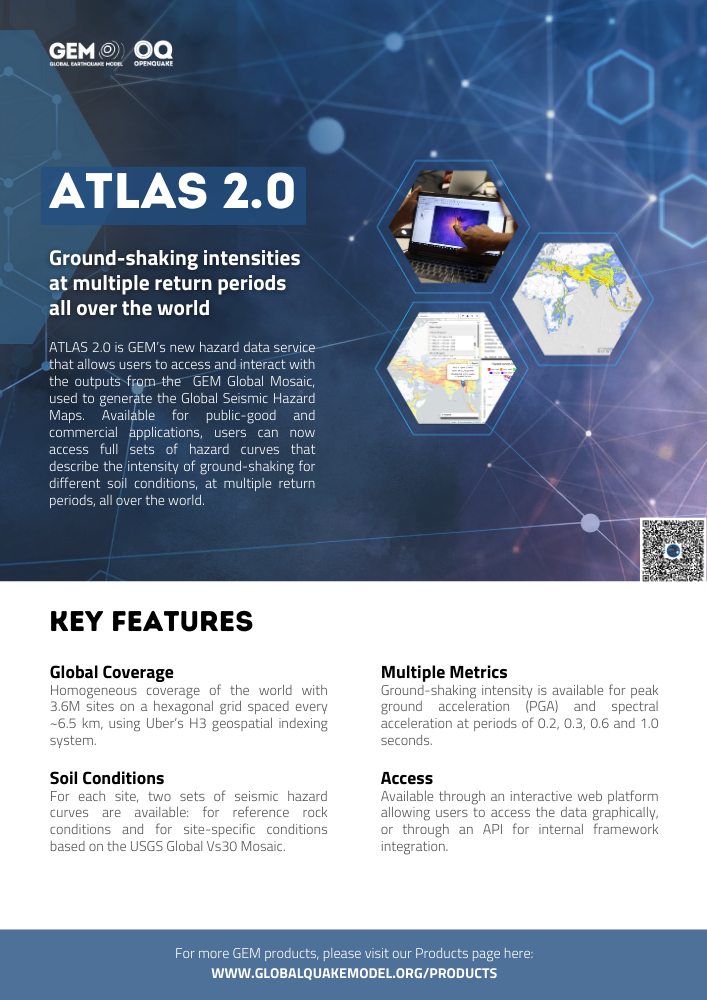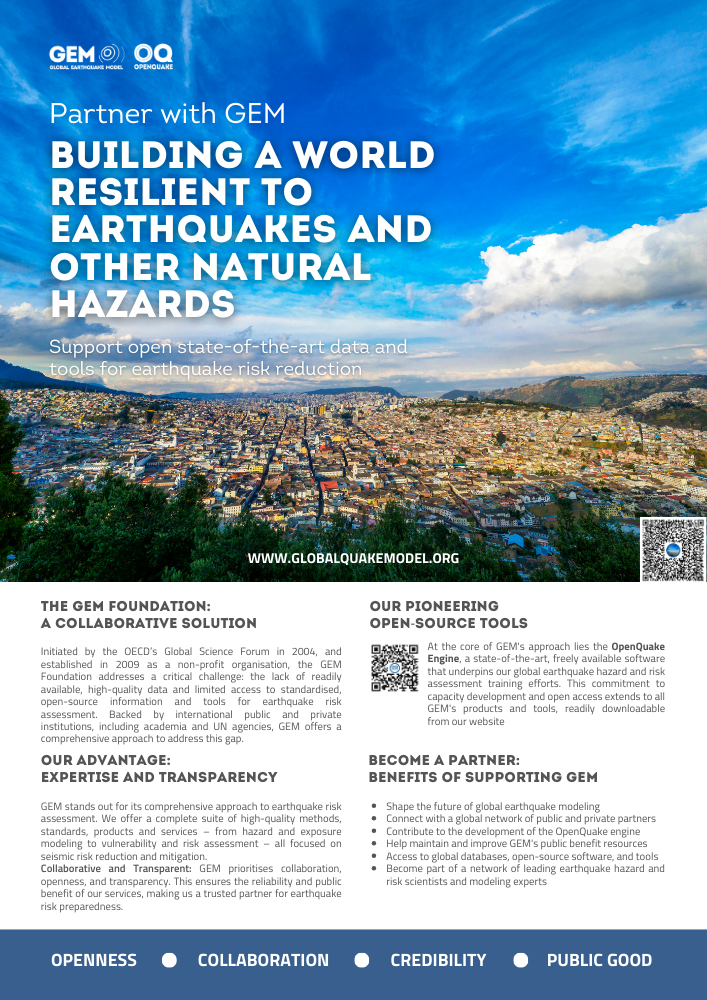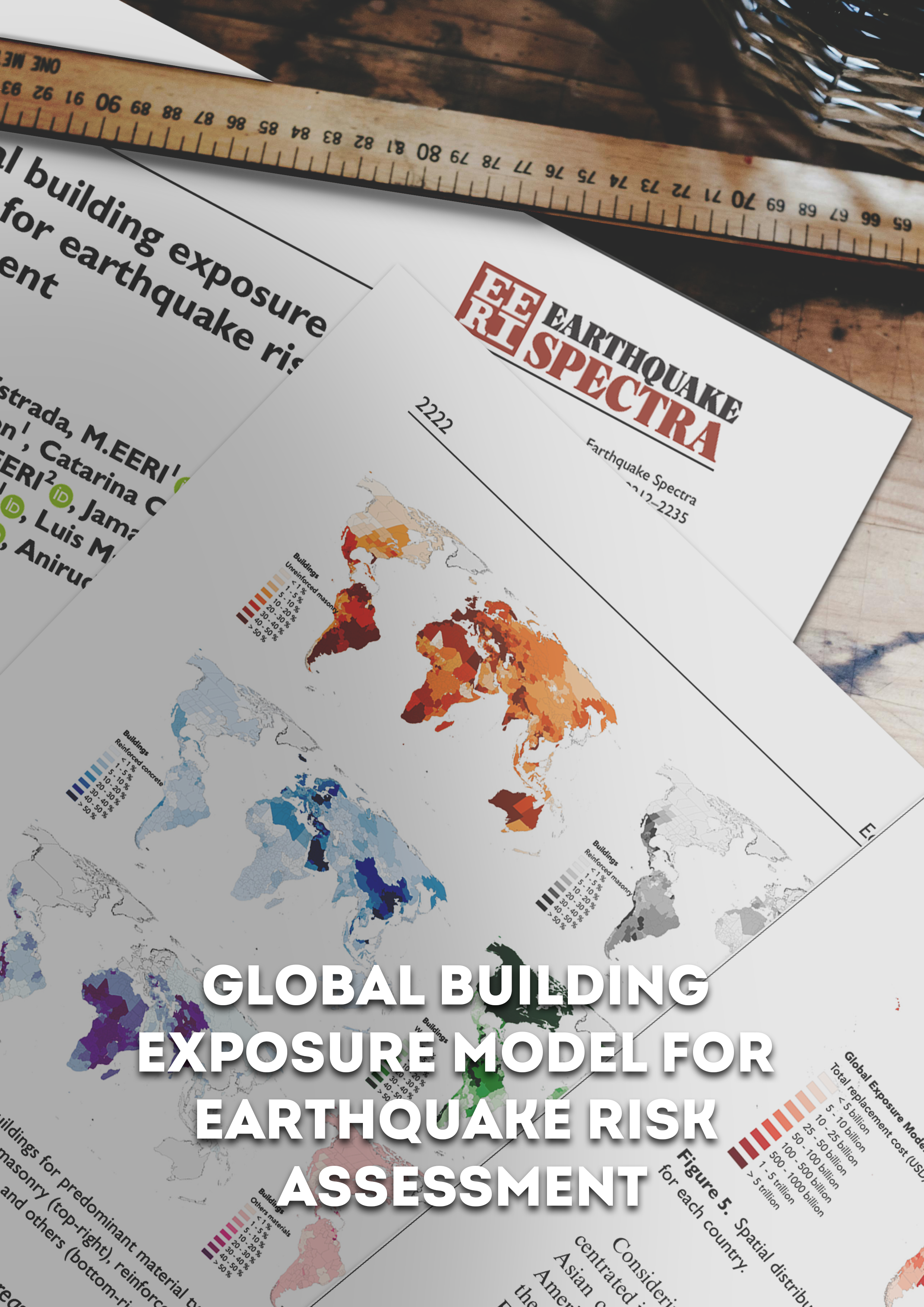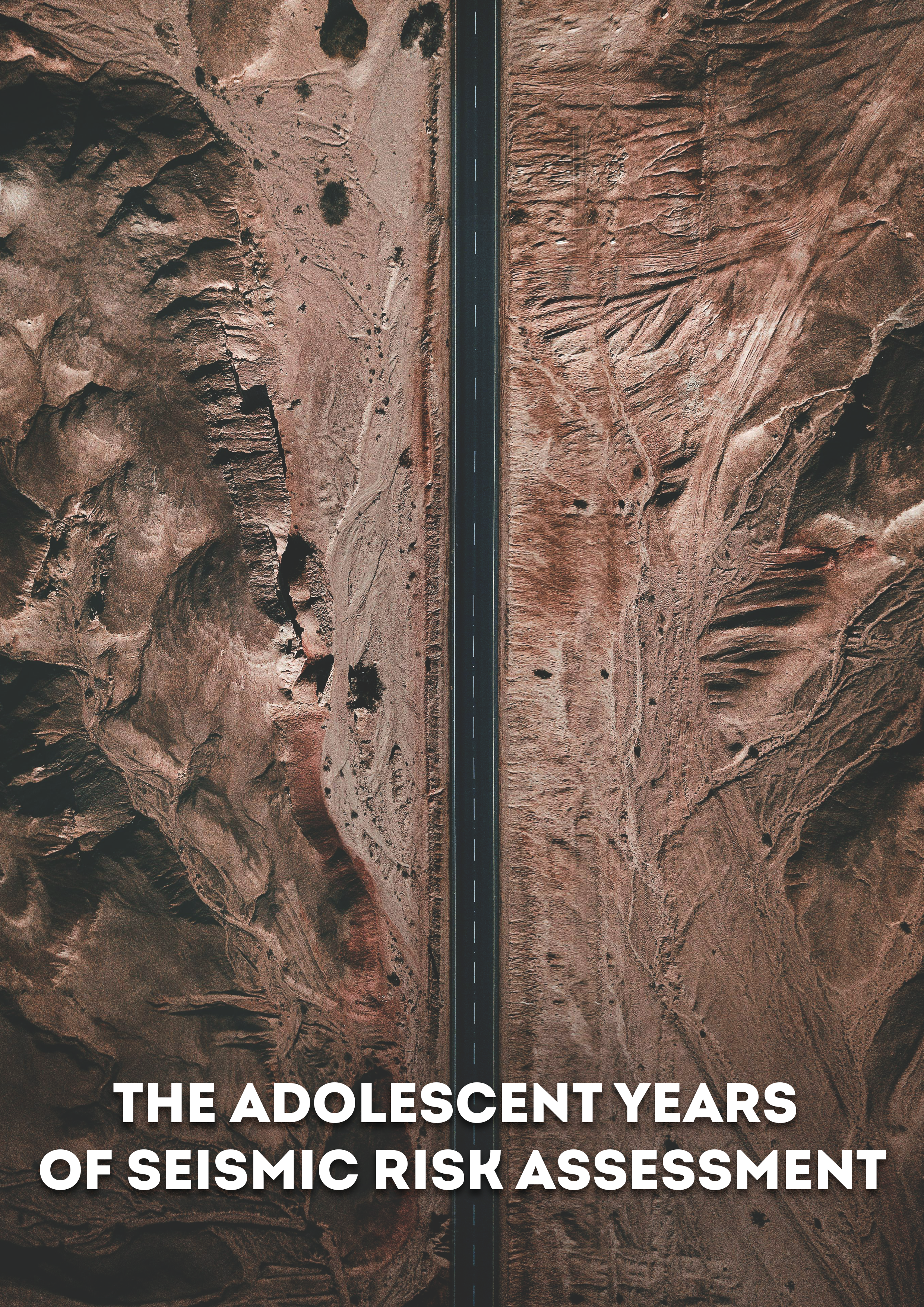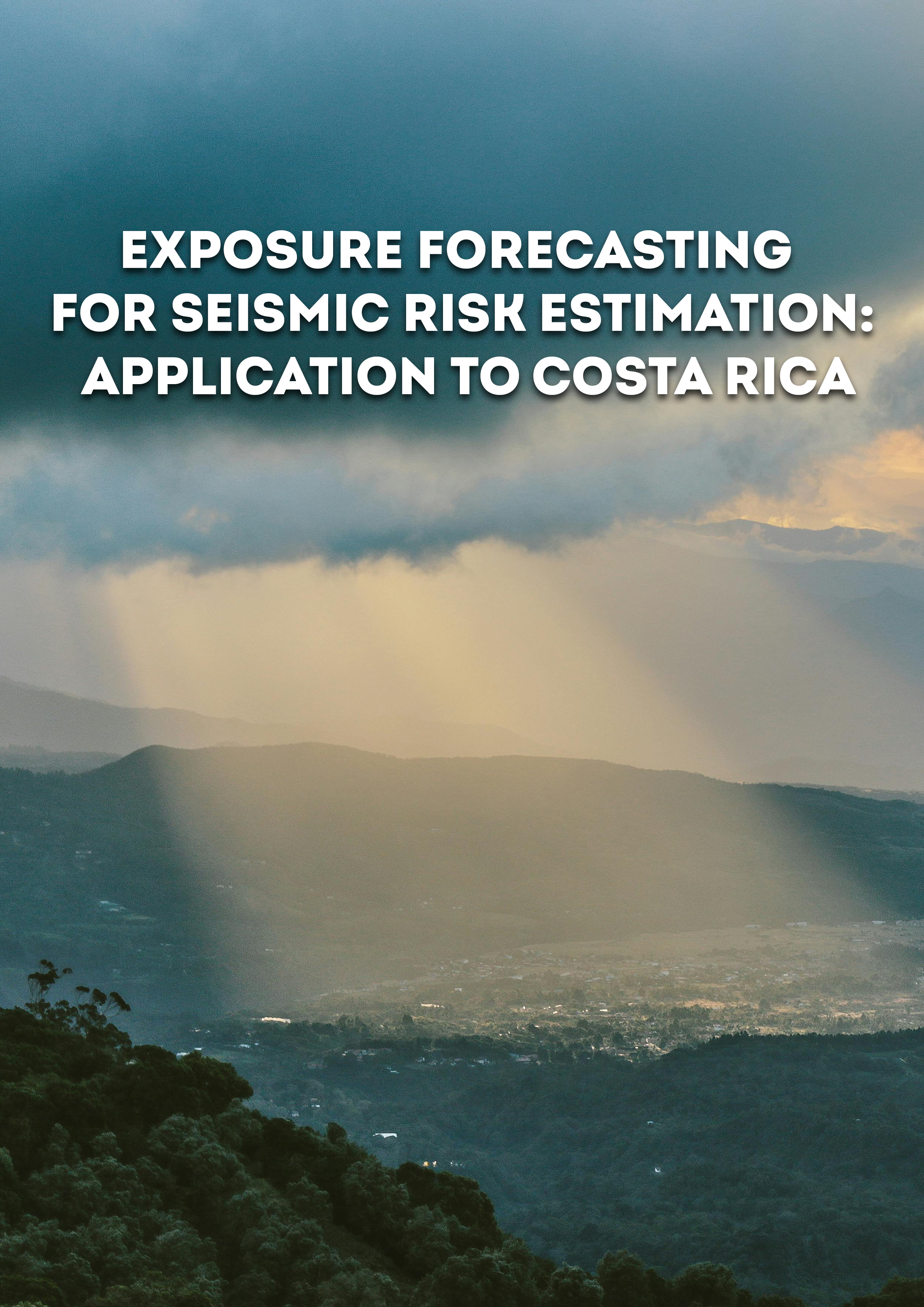top of page

Anchor 1
Publications List
0
Sort by Title:
ATLAS 2.0: Ground-shaking intensities at multiple return periods all over the world
Type:
Brochure
ATLAS 2.0 is GEM’s new hazard data service that allows users to access and interact with the outputs from the GEM Global Mosaic, used to generate the Global Seismic Hazard Maps. Available for public-good and commercial applications, users can now access full sets of hazard curves that describe the intensity of ground-shaking for different soil conditions, at multiple return periods, all over the world.
Global building exposure model for earthquake risk assessment
Type:
Peer-reviewed
The global building exposure model is a mosaic of local and regional models with information regarding the residential, commercial, and industrial building stock at the smallest available administrative division of each country and includes details about the number of buildings, number of occupants, vulnerability characteristics, average built-up area, and average replacement cost. We aimed for a bottom-up approach at the global scale, using national statistics, socio-economic data, and local datasets. This model allows the identification of the most common types of construction worldwide, regions with large fractions of informal construction, and areas prone to earthquakes with a high concentration of population and building stock. The mosaic of exposure models presented herein can be used for the assessment of probabilistic seismic risk and earthquake scenarios. Information at the global, regional, and national levels is available through a public repository (https://github.com/gem/global_exposure_model), which will be used to maintain, update and improve the models.
Development of a global seismic risk model
Type:
Peer-reviewed
The Development of a Global Seismic Risk Model was a mammoth undertaking that involved hundreds of people and for the first time presented a detailed view of seismic risk at the global scale. For some developing countries, this was the first time that a seismic risk map was produced, and the associated country profiles are being used by the local authorities.
GEM Strategic Plan and Roadmap to 2030
Type:
Brochure
GEM was founded in 2009 with the purpose of improving the global knowledge of earthquake risk and contributing to the reduction of risk worldwide. In 13 years, GEM has become widely known for its global effort to improve the state of practice of earthquake hazard and risk assessment and for its contribution to improving the state of knowledge of earthquake risk.
A hybrid ML-physical modelling approach for efficient approximation of tsunami waves at the coast for probabilistic tsunami hazard assessment
Type:
Peer-reviewed
This work investigates a novel approach combining numerical modelling and machine learning, aimed at developing an efficient procedure that can be used for large scale tsunami hazard and risk studies. Probabilistic tsunami hazard and risk assessment are vital tools to understand the risk of tsunami and mitigate its impact, guiding the risk reduction and transfer activities. Such large-scale probabilistic tsunami hazard and risk assessment require many numerically intensive simulations of the possible tsunami events, involving the tsunami phases of generation, wave propagation and inundation on the coast, which are not always feasible without large computational resources like HPCs. In order to undertake such regional PTHA for a larger proportion of the coast, we need to develop concepts and algorithms for reducing the number of events simulated and more rapidly approximate the simulation results needed. This case study for a coastal region of Japan utilizes a limited number of tsunami simulations from submarine earthquakes along the subduction interface to generate a wave propagation database at different depths, and fits these simulation results to a machine learning model to predict the water depth or velocity of the tsunami wave at the coast. Such a hybrid ML-physical model can be further coupled with an inundation scheme to compute the probabilistic tsunami hazard and risk for the onshore region.
Exploring benefit cost analysis to support earthquake risk mitigation in Central America
Type:
Peer-reviewed
We performed benefit-cost analysis to identify optimum retrofitting interventions for the two most vulnerable building typologies in Central America, unreinforced masonry and adobe, considering the direct costs due to building damage and the indirect costs associated with the injured and fatalities. We reviewed worldwide retrofitting techniques, selected those that could be applied in the region for these building types, and derived vulnerability functions considering the impact of each retrofitting intervention in the strength, stiffness, and ductility of the structures. Probabilistic seismic risk analyses were performed considering the original configuration of each building class, as well as the retrofitted version. We calculated average annual losses to estimate the annual savings due to the different structural interventions, and benefit cost ratios were estimated based on the associated cost of each retrofitting technique. Based on the benefit-cost analyses, for a 50-year time horizon and a 4% discount rate, retrofitting these building classes could be economically viable along the western coast of Central America.
The adolescent years of seismic risk assessment
Type:
Peer-reviewed
Vitor Silva reflects on the current position of seismic risk assessment compared to its hazard counterpart, and posits that this discipline is expected to become common practice in disaster risk management, providing decision makers with valuable information not just about the current threat, but also how the impact of future disasters is expected to evolve. The growth of seismic risk assessment into its adult years will allow a more efficient design and implementation of risk mitigation measures. ultimately contributing to its main and only goal: the reduction of the human and economic losses caused by earthquakes.
Exposure forecasting for seismic risk estimation: Application to Costa Rica
Type:
Peer-reviewed
This study proposes a framework to forecast the spatial distribution of population and residential buildings for the assessment of future disaster risk. The approach accounts for the number, location, and characteristics of future assets considering sources of aleatory and epistemic uncertainty in several time-dependent variables. The value of the methodology is demonstrated at the urban scale using an earthquake scenario for the Great Metropolitan Area of Costa Rica. Hundreds of trajectories representing future urban growth were generated using geographically weighted regression and multiple-agent systems. These were converted into exposure models featuring the spatial correlation of urban expansion and the densification of the built environment. The forecasted earthquake losses indicate a mean increase in the absolute human and economic losses by 2030. However, the trajectory of relative risk is reducing, suggesting that the long-term enforcement of seismic regulations and urban planning are effectively lowering seismic risk in the case of Costa Rica.
bottom of page






